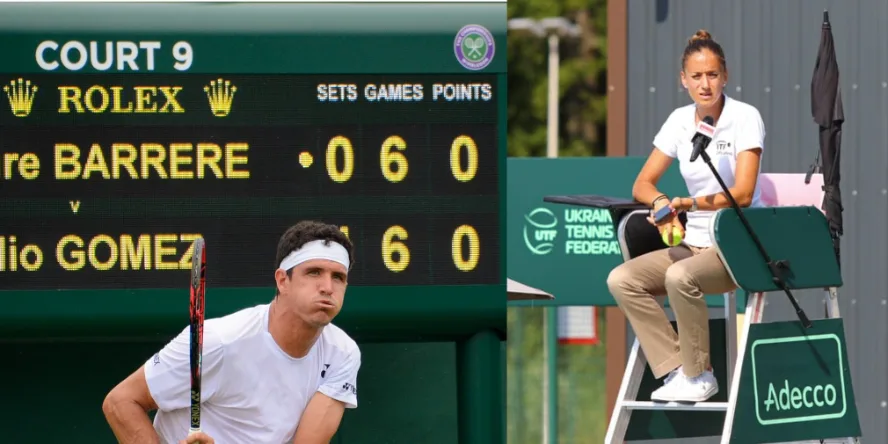
A lot of unique words make up the tennis vernacular. Perhaps at the top of the list is the word “love.” Hearing it said constantly, people start to gather that it means zero. However, is there a reason why love is another way to say zero?
Zero is called love thanks to the French word l’oeuf, which means egg. The shape of a zero and an egg is similar, and l’oeuf sounds a lot like love in English. Thus, love was born.
Alternative History of Love in Tennis
While the French egg word makes some sense, others are skeptical that it is the true reason why the love term stuck. Another theory out there is that love is short for the expression “to play for love.”
This means that a player has no points, but they are still playing hard for the love of the game. It’s part of the spirit of the game as a competitor.
Whether this is the true story of love or it’s the French inspiring the term, it’s been around for centuries. Most people don’t question the origin of love, but they stick with it and continue to play the game the way that everyone has for a long time.
Saying Love Instead of Zero All the Time in Tennis
The unique quirk of calling zero in tennis “love” has turned into virtually a requirement. Any time in person hears someone call out the score and say zero instead of love, they wonder just how much tennis they’ve played in the past. It sounds off to say it that way.
It’s pretty easy to see that most tennis players don’t even think about it twice once they learn the lingo. It might not make sense to people outside of the tennis world, but love is completely interchangeable with zero while playing.
What Happens If a Player Says Zero?

Most tennis players won’t care too much if someone says zero instead of love. Unofficially, love is the correct term, but there’s not a ton of gatekeeping in the sport like there might be elsewhere.
With that being said, it’s always recommended to learn the basic lingo of a sport and fit in with everyone else. Those who don’t call things correctly might confuse others and seem like they are not willing to make any changes.
No one wants to be labeled as the person unwilling to call the score correctly. It makes tennis more enjoyable for everyone to use the right terminology at all times.
Additional Unique Vocabulary in Tennis
Love might be the most noted different term in tennis, as even those who don’t play know that they use the word instead of zero. Other terms out there also make it seem like tennis players speak a different language at times.
When it comes to numbers, tennis players have more recently started using other food shapes as substitutions for numbers. For example, winning a said 6–0 means that a player got bageled. A bagel has a similar shape to a zero, and it’s a way to playfully talk about a dominant win.
If the opposition gets one game, that’s a breadstick. A breadstick looks just like the number one, so it follows the same pattern as a bagel.
Of course, talking about numbers and doing simple addition in tennis seems challenging as well. it takes a little bit of time for people to learn how to properly keep score in tennis, as it is extremely unique compared to any other sport.
Each part of tennis scorekeeping feeds into a bigger part of the match. Points lead to games, games lead to sets, and sets lead to a match. An individual point is worth 15 points in tennis, but the third point is only worth 10 while the fourth point is worth 20. This has more to do with the length of saying 45 compared to 40, and less to do with cutting down the value of each point.
It takes four points to win a game, but a player must win by two. A player is then hoping to win six games before their opposition in a set to win the set. Most matches are best-of-three sets, so a player needs to win two sets to win the match. In a best-of-five sets matchup, a player must win three sets.
If a game is tied at 40–40, it’s known as deuce. When one side takes the advantage, it’s either ad-in for the server, or ad-out for the receiver. There are formats where there is no advantage, meaning that a player doesn’t have to win a game by two. There’s essentially one final point played to determine the winner of the game.
If a set is tied 6-6, there’s an opportunity to play a tiebreaker between the two sides. It’s mostly played to seven, and the two players alternate serving two points at a time. The same rules apply as far as having a win by two.
Another time when tiebreakers come into play is if players want to play a third set tiebreak instead of a full third set. This usually calls for an extended tiebreaker that goes to 10 points. Two players might not feel like they want to play an entire third set, so this speeds up the process.
Will Love Ever Fall Out of Style?
Tennis is one of the most traditional sports out there. They’ve been very reluctant to change, for better or for worse. That’s why it seems like love will be around for a very long time.
It’s not too much of a change for people to pick up on once they start playing. It might seem weird and different, but it’s what makes tennis unique in some ways. Expect love to be in the air around tennis courts for years to come.
